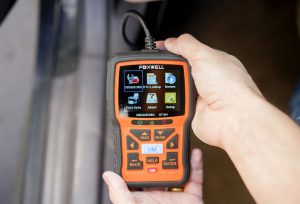 The check engine light can be a terrifying thing. You are driving along and all the sudden there it is, the glowing yellow light with a mysterious meaning. Some problems are easy to fix, while others will require a trip to a professional dealership. Here are four things that your check engine light might be trying to tell you and what you should do about them.
The check engine light can be a terrifying thing. You are driving along and all the sudden there it is, the glowing yellow light with a mysterious meaning. Some problems are easy to fix, while others will require a trip to a professional dealership. Here are four things that your check engine light might be trying to tell you and what you should do about them.
Loose or Faulty Gas Cap
Many modern vehicles have a sensor at the gas cap that generates a code if the cap is broken or has not been installed correctly. If the check engine light comes on soon after you have filled up the tank, check to make sure that there aren’t any cracks in the cap and then replace the cap, being careful to get it screwed in tightly. Though not critical to your car’s function, a loose or faulty gas cap can lead to lower gas mileage and higher vehicle emissions.
Overheating or Oil Pressure
When the check engine light comes on, you should immediately look at all the other gauges and readings on your dashboard. Look specifically for low oil pressure or a high reading on the engine coolant temperature gauge. These issues are very serious and require that you stop driving immediately and get your car to a professional mechanic. Many vehicles have check engine light that differentiates between critical and non-critical error codes. A serious issue will be communicated by a flashing check engine light. With a solid check engine light, you’ll probably have time to drive the vehicle to the mechanic.
Oxygen Sensor
Your vehicle controls the flow of fuel and air to your engine using a series of oxygen sensors that assure that the system is working optimally. When one of these sensors goes out, your vehicle lacks the information to run efficiently. In most cases, a faulty oxygen sensor will throw a code that triggers the check engine light. This error is not immediately critical but should be dealt with by a professional dealership so that your car runs at peak performance.
Spark Plugs and Wires
Spark plugs seal the combustion chamber on your engine and provide the gap for the spark to jump across to initiate combustion. Old and dirty plugs can misfire causing hesitations in acceleration and the check engine light to come on. In older vehicles spark plugs should be changed every 25,000 to 30,000 miles. With newer cars, that mileage can go up to 100,000. In either case, if your check engine light comes on, it is worth having a mechanic evaluate the spark plugs.
Check engine lights can be daunting, but the good news is that most of the time the light is associated with a code. These codes are readable by a professional dealership mechanic. If your check engine light comes on, but your vehicle isn’t showing any other signs of malfunction, it is best to get to a mechanic promptly to have the code read and the problem repaired. If the light is flashing or your vehicle is not acting normal, pull over immediately and arrange to have your vehicle brought to a certified technician like those at Ourisman Chrysler, Dodge, Jeep of Alexandria for service.
Image via Flickr by yourbestdigs/Under use by CC BY 2.0







